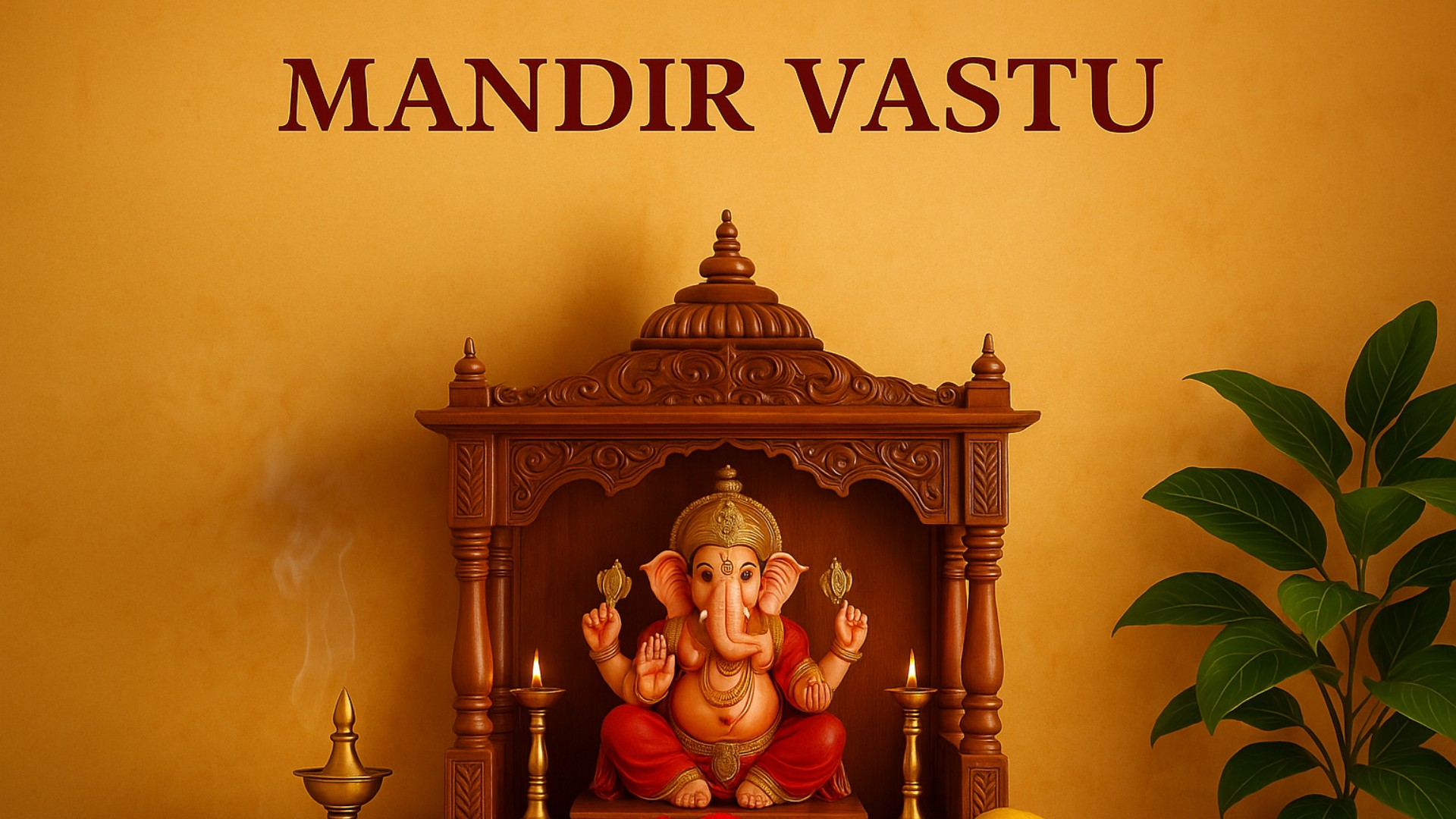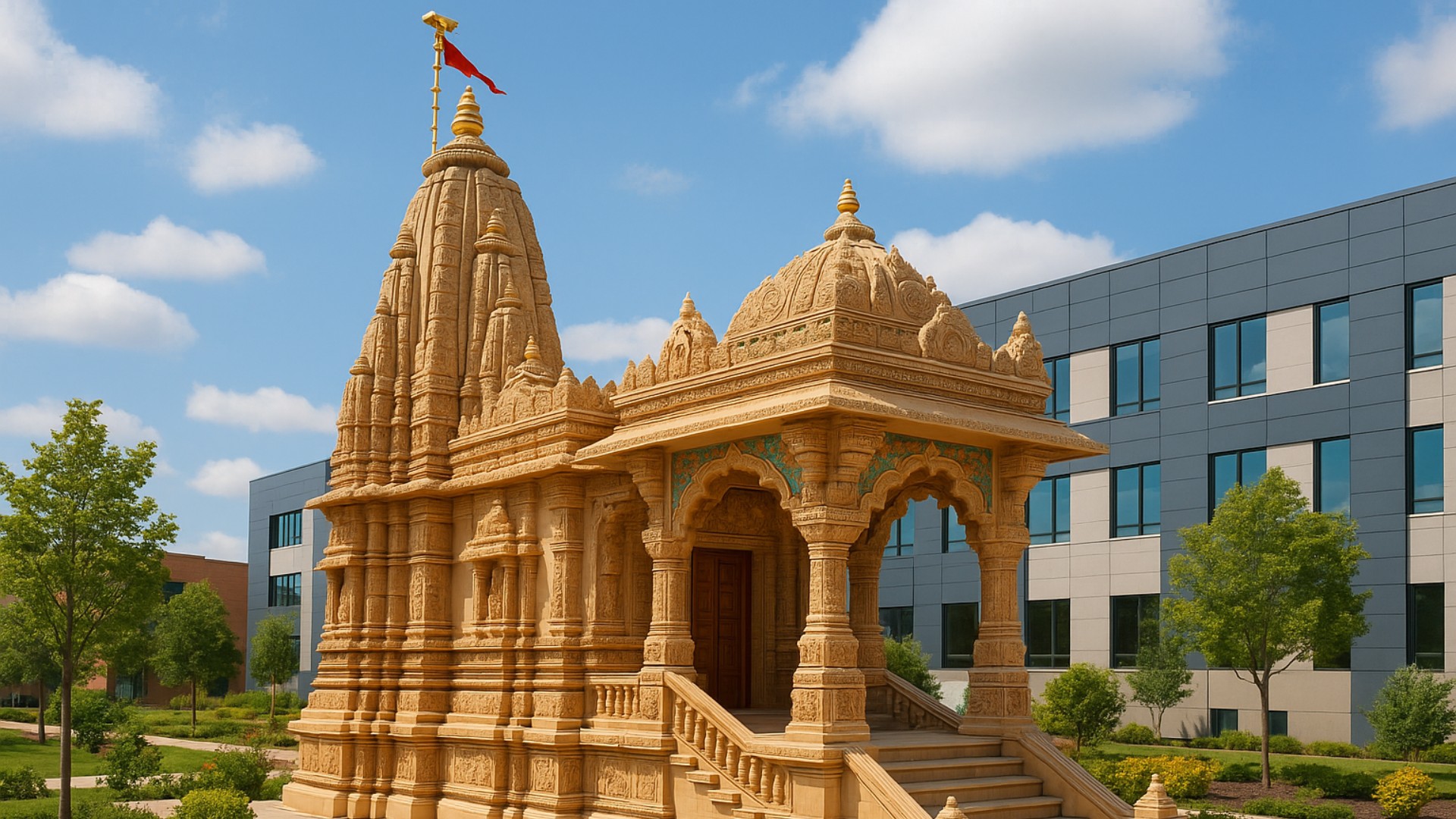In an age where peace feels like a luxury, creating a corner of divinity within your home is not just a tradition—it is a psychological necessity. The ancient science of Mandir Vastu is gaining renewed attention, offering homeowners a blueprint to align spiritual energy with architectural design. With urban homes becoming more compact and fast-paced lifestyles pushing spirituality to the margins, Mandir Vastu becomes the subtle anchor restoring balance between the material and the divine.
Let’s delve into why Mandir Vastu is more than a belief—it's an architectural philosophy backed by energy alignment, logical placement, and psychological well-being.
The Essence of Mandir Vastu: Where Spirituality Meets Structure
Mandir Vastu, derived from the broader Vastu Shastra, focuses specifically on the ideal placement and orientation of prayer areas or temples within residential or commercial spaces. It isn't just about where the idols sit—it’s about how cosmic energies flow into your life. When properly applied, Mandir Vastu enhances mental clarity, brings emotional stability, and cultivates a serene atmosphere for daily worship.
Vastu experts assert that the northeast corner of any home—also known as the Ishan Kona—is the most sacred space, influenced by the divine energies of Jupiter. Positioning your Mandir here is believed to channel divine grace effortlessly.
Core Features of Mandir Vastu
Let’s explore the essential aspects and specifications that make Mandir Vastu a holistic system rather than a set of rigid rules:
- Directional Alignment: Idols should face either east or west to allow devotees to pray while facing north or east, which is considered auspicious. This orientation ensures maximum energy inflow during early morning hours.
- Material Consciousness: Mandirs should ideally be made from wood or marble—natural elements that resonate with purity and longevity. Avoid glass or acrylic units as they disrupt vibrational integrity.
- Height and Positioning: The temple should not be on the ground directly. A raised platform elevates the divine energy and maintains sanctity. Moreover, idols should not be more than 9 inches in height and should not be placed in cramped areas.
- Lighting and Colors: Warm lighting with soft yellow or white hues enhances the spiritual ambiance. Colors like ivory, pale yellow, or light pink on the walls evoke calm and positivity.
- Cleanliness and Separation: The Mandir should not share a wall with a bathroom or be placed in a bedroom. If space constraints demand bedroom placement, a curtain or wooden partition should be used to create energetic separation.
These features aren’t random; they are strategically aligned to amplify psychological comfort and energetic harmony.
Why Mandir Vastu Still Matters in Contemporary Architecture?
In a world flooded with modernist architecture and minimalist aesthetics, the wisdom of Mandir Vastu acts as a cultural tether. Many architects now collaborate with Vastu consultants during the design phase to ensure not just structural beauty but spiritual congruence.
This growing synergy between tradition and technology is proof that Vastu is not an outdated concept but an evolving science of sacred architecture. It helps create a meditative space that supports mental detoxification, spiritual growth, and inner alignment—all crucial in today’s overstimulated environment. Just as Vastu refines spatial energy, understanding Rudraksha types enhances personal energy—each bead offering unique vibrations that align with specific intentions, from peace to power.
Practical Tips for Applying Mandir Vastu
Whether you are constructing a new home or remodeling an existing one, here are quick yet impactful tips:
- Avoid South-West for Temple Placement – It can invite financial stress and health issues.
- Use Copper or Brass Accessories – Diyas, bells, and incense holders made from these metals enhance sacred vibrations.
- Declutter the Mandir Weekly – Energetic stagnation can occur in messy or neglected altars.
- Avoid Storing Items Below the Temple – Use this space only for ritual materials, not mundane items.
By following these guidelines, you ensure that your temple becomes a genuine spiritual nucleus rather than a decorative corner.
You Can Also Watch :- Podcast with Astro Ganesh & Praveer: Unlock Your Future!
Conclusion: Mandir Vastu—A Blueprint for Inner Harmony
Mandir Vastu is not just a cultural practice—it is a conscious lifestyle design. When thoughtfully integrated into your living space, it becomes a constant source of calm, intention, and spiritual nourishment. Amid the chaos of digital noise and material distractions, this sacred science reconnects us to what truly matters: inner peace and divine alignment.
Adopting Mandir Vastu is a kin to giving your soul a dedicated space to breathe, reflect, and rise. It's time we see our homes not just as shelters but as sanctuaries—and Mandir Vastu is the key that unlocks that transformation.







